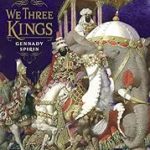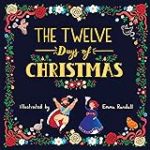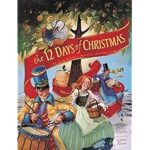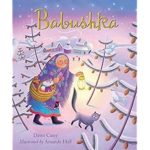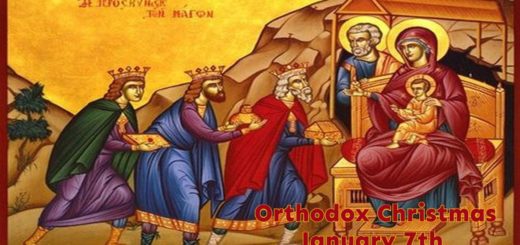The Feast of the Epiphany January 07, 2004.
by holidayconnections · Published · Updated
"The Twelve Days of Christmas"
 Most Christians celebrate the birth of Jesus on December 25th. with family gatherings and Midnight mass not to mention Santa Clause and Christmas tree. For them, December 26, is the time to dismantle the Christmas tree and go about their daily lives as usual.
Most Christians celebrate the birth of Jesus on December 25th. with family gatherings and Midnight mass not to mention Santa Clause and Christmas tree. For them, December 26, is the time to dismantle the Christmas tree and go about their daily lives as usual.
But, for most Catholics, from France, Italy, Spain, Portugal, and the colonies of these countries, independent countries now, like Latin American countries; the Christmas season continues with the “Twelve Days of Christmas” on January 7th when according to Matthew 2:1–12, on this day, Jesus was given his name and was introduced as Christ to the Gentiles represented by the Magi or “The Three Wise Men”. Bithsarea, Melchior, and Gathaspa [Melchor, Gaspar y Baltazar in Spanish] They were Magi, men of science that had come from Persia following a star. This day is known as The Epiphany or “Three Kings Day.”
When I was a child, Christmas was just about Midnight Mass, Posadas, Pastorales, and reflection. No presents. On Three Kings Day, children were given small gifts left on the window sills. These small gifts were mostly toys, candies, or coins.
 On this day we eat “The Kings Bread” [ Rosca de Reyes] an egg bread shaped like a crown and decorated with candied fruits that resemble precious gems, and a ceramic baby doll hidden inside. You must cut your own piece, use your own luck, because if you get the little baby doll hidden in the bread, then you must bring “Tamales” on February 2nd. to the Feast of the Candle Mass. We had to learn how to make it, because we could not find it in the United States, and today, my granddaughters love to make it and share it with friends.
On this day we eat “The Kings Bread” [ Rosca de Reyes] an egg bread shaped like a crown and decorated with candied fruits that resemble precious gems, and a ceramic baby doll hidden inside. You must cut your own piece, use your own luck, because if you get the little baby doll hidden in the bread, then you must bring “Tamales” on February 2nd. to the Feast of the Candle Mass. We had to learn how to make it, because we could not find it in the United States, and today, my granddaughters love to make it and share it with friends.
Most colonial America share this tradition brought by Catholic countries like Portugal, Spain, and France. In France, they eat “Galette de Roi” a bread filled with cream, and if you find the walnut hidden inside, you are the King or Queen of the day. This is a tradition brought to New Orleans by the French.
Who were the Three Kings?
 The Magi were wise men who saw a star with an unusual brightness. They took it as a divine call and they made a commitment to follow this star not knowing where it might lead them. These foreigners, were the first Gentiles to see the “Light in Jesus.”
The Magi were wise men who saw a star with an unusual brightness. They took it as a divine call and they made a commitment to follow this star not knowing where it might lead them. These foreigners, were the first Gentiles to see the “Light in Jesus.”
The three kings came riding a horse, a camel and an elephant, and they represented all the human races of the world.
Balthasar is often represented as a king of Arabia or sometimes Ethiopia, Melchior as a king of Persia, and Gaspar as a king of India.”[25]
What were the Gifts?
 St. Irenaeus of Lyons was the first Church Father to equate the Wise Men’s gifts of gold, frankincense, and myrrh with Christ’s roles as King, God, and Sacrifice. This became the dominant reading, still familiar through the beautiful Victorian Christmas carol, “We Three Kings of Orient Are.”
St. Irenaeus of Lyons was the first Church Father to equate the Wise Men’s gifts of gold, frankincense, and myrrh with Christ’s roles as King, God, and Sacrifice. This became the dominant reading, still familiar through the beautiful Victorian Christmas carol, “We Three Kings of Orient Are.”
Gold. Has always been intended to honor a newborn king. Gold was a valued commodity in the ancient world, associated with royalty and nobility, as is seen in 1 Kings 10
Frankincense, is an aromatic resin used in incense and perfumes, for religious and medicinal purposes from China to Egypt and in between. Resin from trees native to the countries of Oman and Yemen, in the south of the Arabian Peninsula, and to Somalia, in the Horn of Africa.[5]. The word is from Old French franc encens (‘high-quality incense’).[2]
Myrrh gum is commonly harvested from the species Commiphora myrrha, native to Somalia, Oman, Yemen, Eritrea, Somali Region of Ethiopia and parts of Saudi Arabia.was formerly a greatly valued ingredient of Jewish holy incense, and medicine as analgesic.

